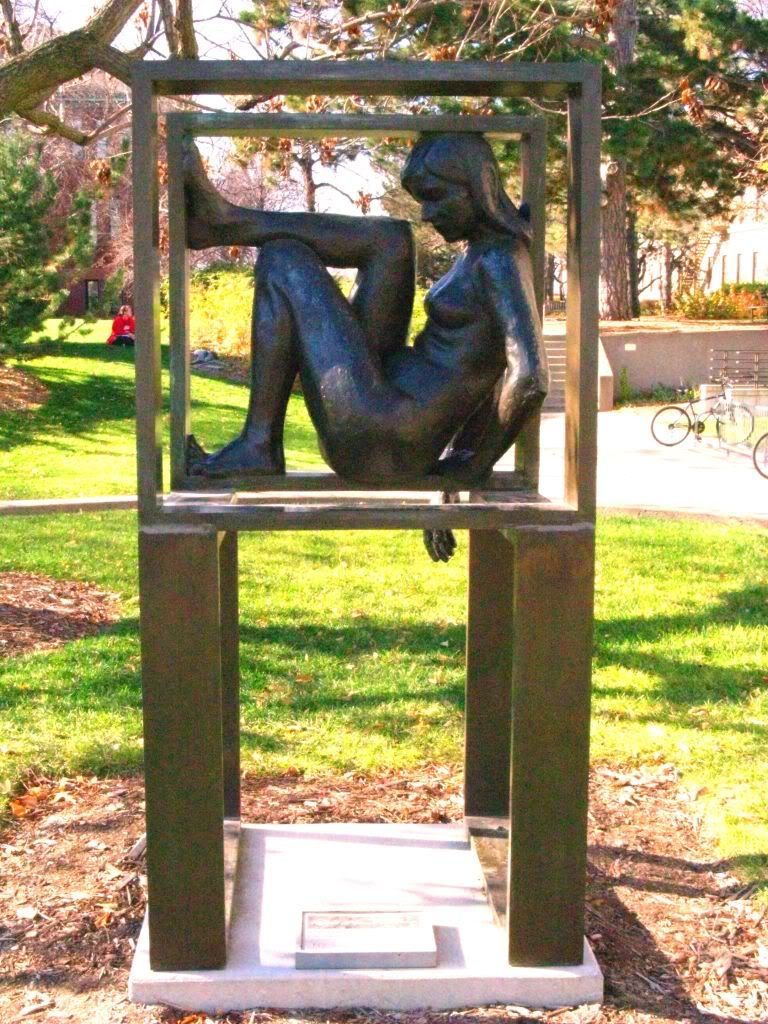 The "quality" of art is a matter of judgment and there is no obvious set way for anyone to create a pre-determined scale in which to grade pieces of artwork. That said, there is also no real clear guideline between what is art and what is not, simply a distinction between types such as sculpture or painting, etc. For instance, a piece of artwork inside of an art museum can be just as spectacular as one outside, or even the building itself which can be construed as art. Likewise when taking a piece such as the one at left of "SANDY: In Defined Space," it's difficult to determine where the art stops and where it begins, but only where the sculpture begins and ends.
The "quality" of art is a matter of judgment and there is no obvious set way for anyone to create a pre-determined scale in which to grade pieces of artwork. That said, there is also no real clear guideline between what is art and what is not, simply a distinction between types such as sculpture or painting, etc. For instance, a piece of artwork inside of an art museum can be just as spectacular as one outside, or even the building itself which can be construed as art. Likewise when taking a piece such as the one at left of "SANDY: In Defined Space," it's difficult to determine where the art stops and where it begins, but only where the sculpture begins and ends.A piece of artwork in an outdoor setting somehow gives us a different outlook on how we should view the art. Wheras it sounds "sophisticated" to take a stroll through an art gallery, taking a peaceful walk through a sculpture garden doesn't sound quite as elegant. But why? The art outdoors is often times just as magnificent as that of its indoor counterpart, yet it lacks the same respect. Possibly we just have an altered idea of what really constitutes art as a whole and don't realize that nearly everything is artful.
Taking a look back at the picture, we can obviously see the main, general sculpture in the middle of the scene. The stacked boxes with the nude grl inside cast in bronze on a concrete base would generally be constituted as art. Now thinking further, what helps this sculpture stick out even more than the lighting and landscape surrounding "SANDY?" Should that not also be considered as art? In all actuality, the landscapers may have taken just as much initial effort and insight to create the surrounding feaux-nature, but do not gather near the credibility. Just the same, "SANDY" was set in 1962 and has hardly been upkept by more than a cleaning ever since. On the other hand, the landscaping has to be upkept nearly every day and has lasted since the early 1900s when this section of the campus was first developed. If anything, the landscape should be considered possibly more artsy than the sculpture.
Now relating this to John Cage's 4'33", and Friday's class meeting, we can see that our observance of what is a class and what isn't a class is altered by a predetermined jugement of what a class has ever been since we began schooling nearly a decade and a half ago. Similarly, we also seem to think that the level of how much we learn during a givin class period is determined by how much the instructor lectures, how many notes we take and how much time we will have to put aside for studying between now and next week's test. Maybe if humans were able to grasp the larger picture and not go simply on developed instinct, we would be better apt to learning and generally more open minded. By creating an environment lacking a traditional instructor, such as that on Friday, we decided to wonder and basically waste our time instead of taking advantage of the situation to discuss something useful and understand better what was happening.